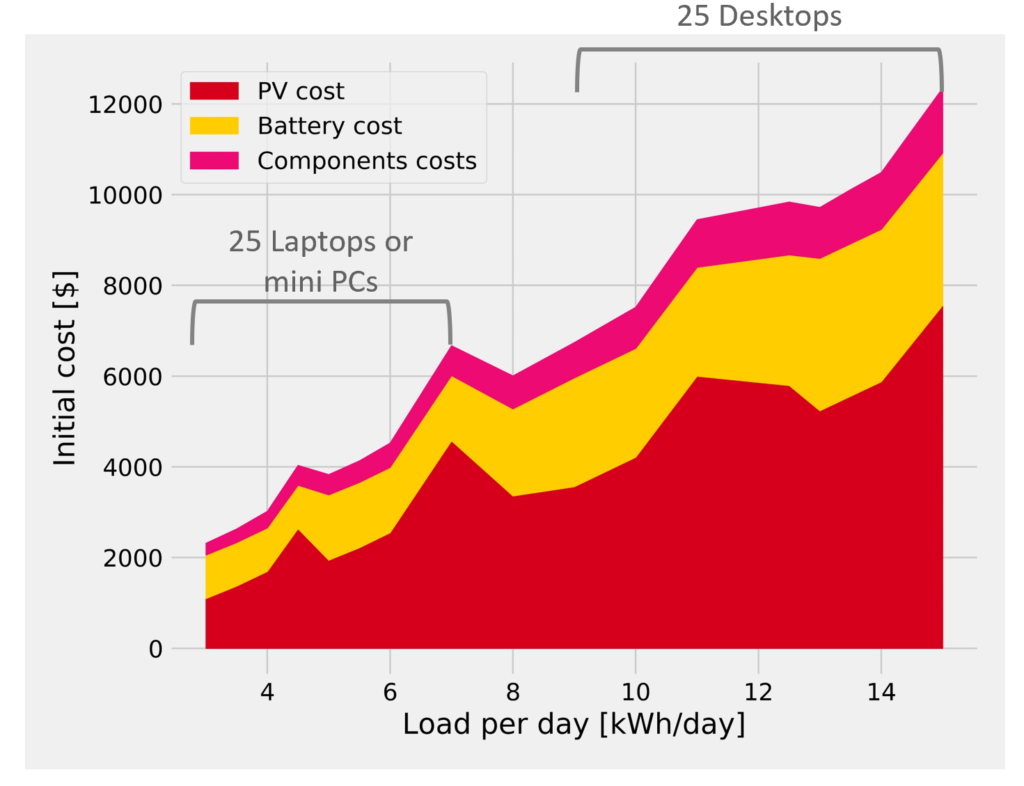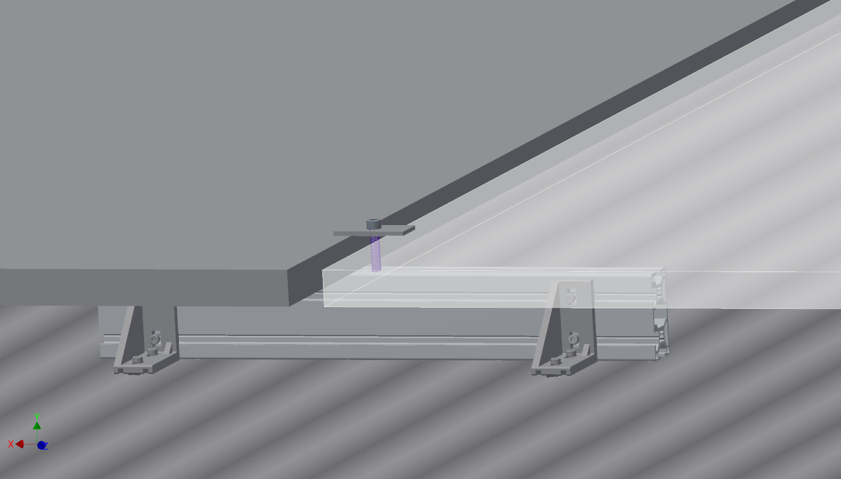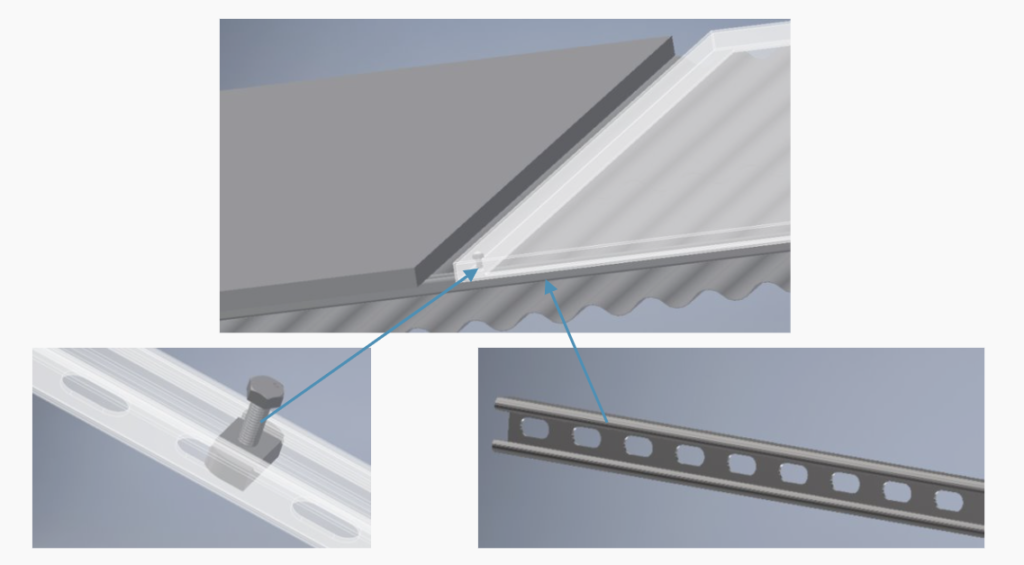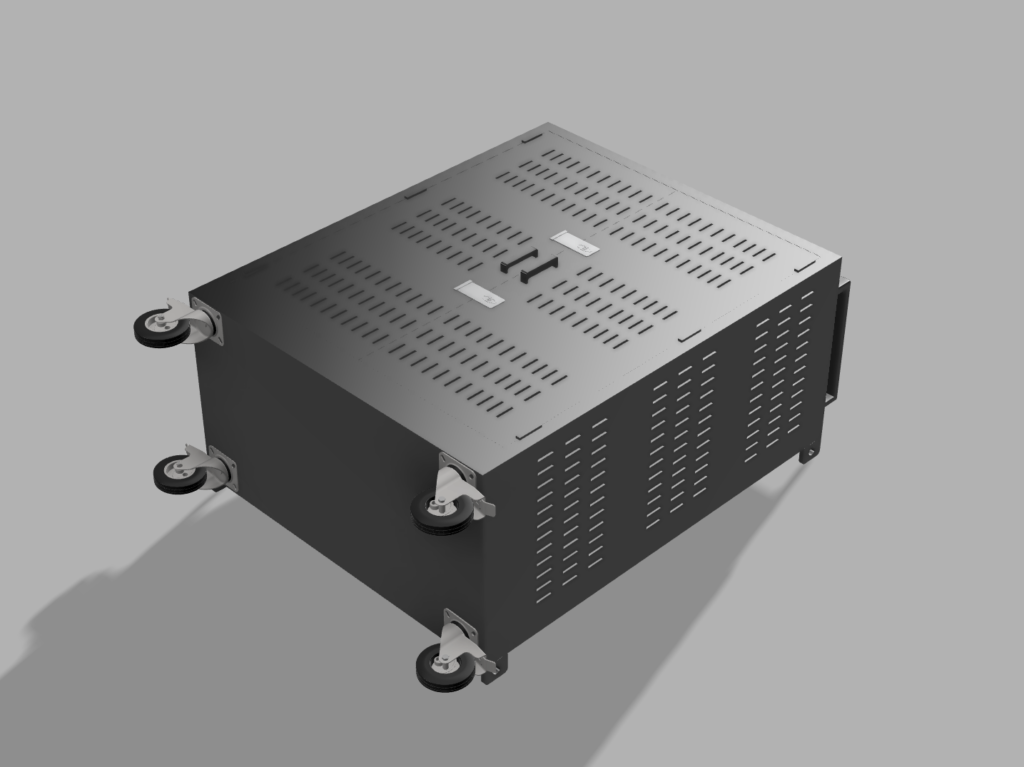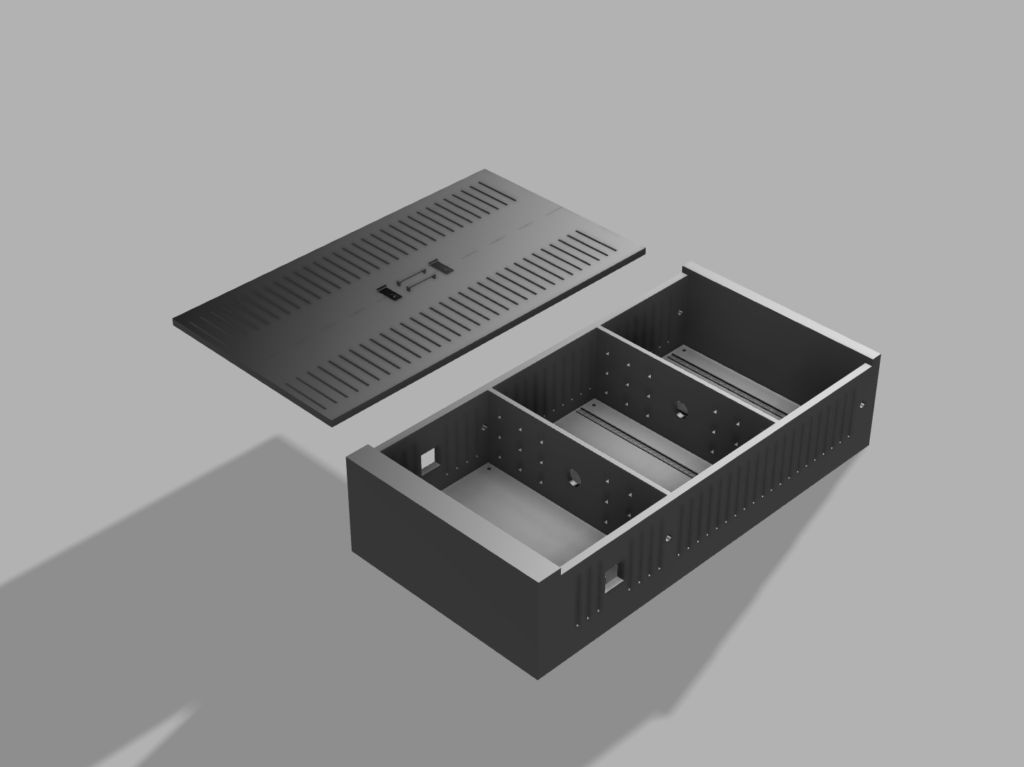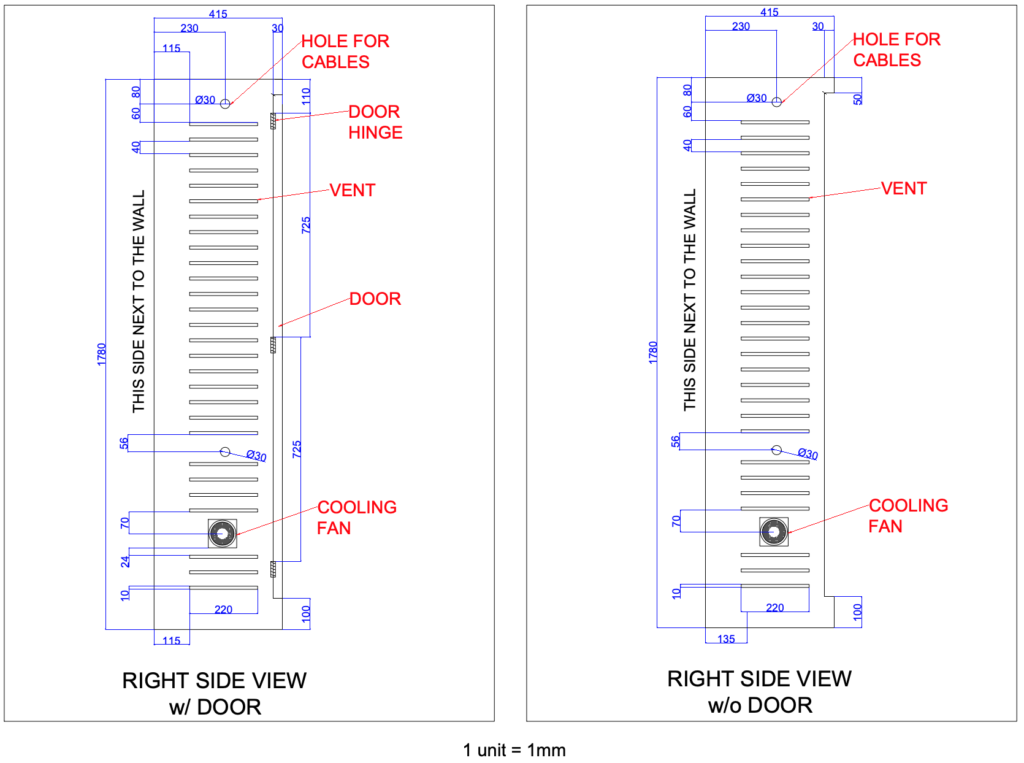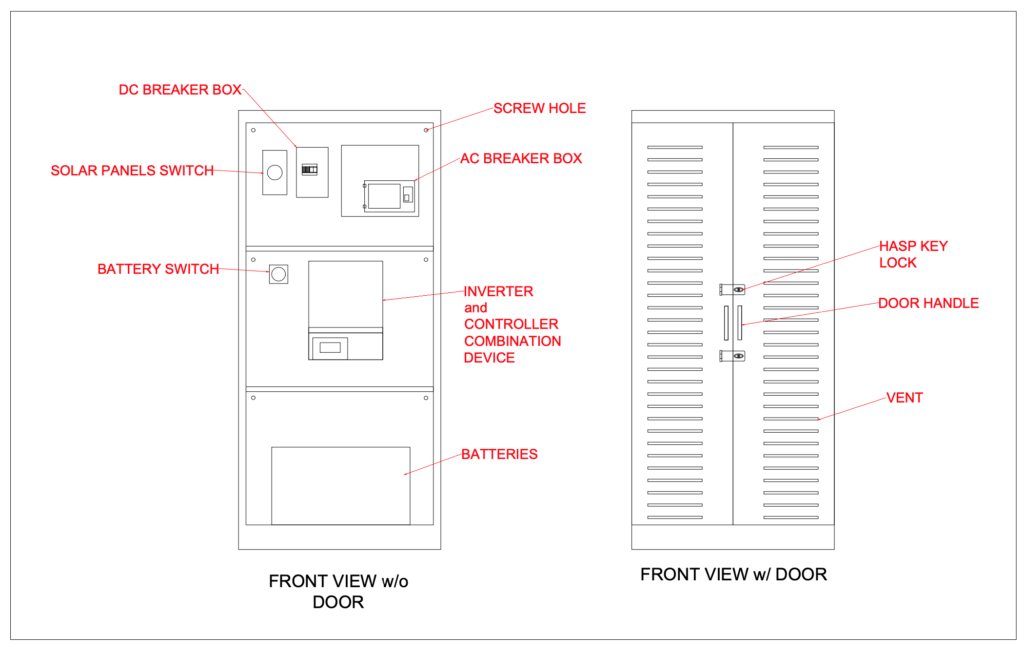Project Category: Multidisciplinary
Join our Zoom Room, live on April 13th from 10:00 am to 12:30 pm!
About our project
Our team worked with HOPEthiopia to determine the most effective way to solve grid unreliability in rural Ethiopian schools. In 2022, our solution, a solar energy system, will be implemented in Harbu Chulule. This will allow students to leverage technology, despite grid intermittency. The diagram below shows the specifications of the major components required for our design of Harbu Chulule’s solar energy system. Harbu Chulule has two schools, a junior high and a high school. Each school will have an identitical solar energy system, designed to power 25 computers.
To extend our impact, we developed a comprehensive solar design guide that can be used by other NGOs to power rural computer labs.
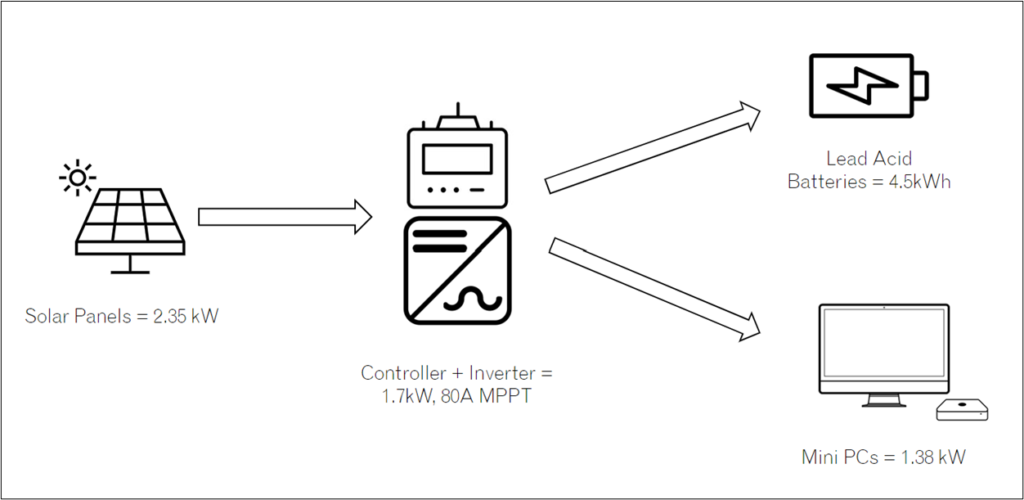
Meet our team members

Danielle Dumouchel
Mechanical Engineering

Grace Curry
Mechanical Engineering, Energy and Environment Specialization

Amira Elwakeel
Civil Engineering, Energy and Environment Specialization

Carolyn Pethrick
Mechanical Engineering, Energy and Environment Specialization

Louisse Vinluan
Electrical Engineering
Details about our design
Project Summary
Our project iteratively optimized a solar energy system for powering the computer lab in rural schools. After our capstone project, we have developed a strong theoretical basis for implementing solar energy using our component sizing guide. The flowchart on the right summarizes our achievements.
Why solar energy?
Solar energy is the best option for rural schools which lack stable grid access. Solar is a robust energy option in terms of maintenance, reliability, and safety. We also considered diesel generators, waste-to-energy systems, and micro-wind generation. The only two realistic options were diesel generators and solar power. Solar energy was an easy choice because of the maintenance and fuel required for diesel generators.
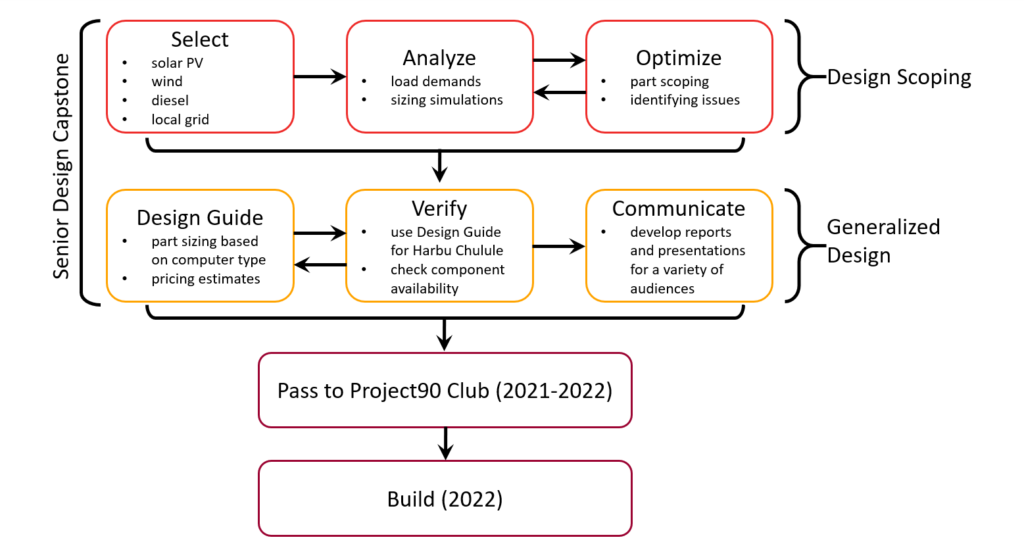
Reliability
Frequent electricity shortages make it difficult for students in many rural Ethiopian schools to access computer education. Our proposed solar energy system provides electricity to power 25-computer classrooms for four hours a day, 97.5% of the time. The visible red bars in the plot below are the portions of unmet load over the year. There is more unmet load in July and August when the weather is rainy in Ethiopia. The intermittency of solar prevented us from achieving 100% reliability in these months without heavily oversizing the system. Our system provides the best balance of size with reliability.
We used HOMER energy simulation software to optimize the cost, reliability and size of our solar energy array and batteries. To validate our results, we compared the program’s output with literature values and alternative methods for sizing solar energy systems.
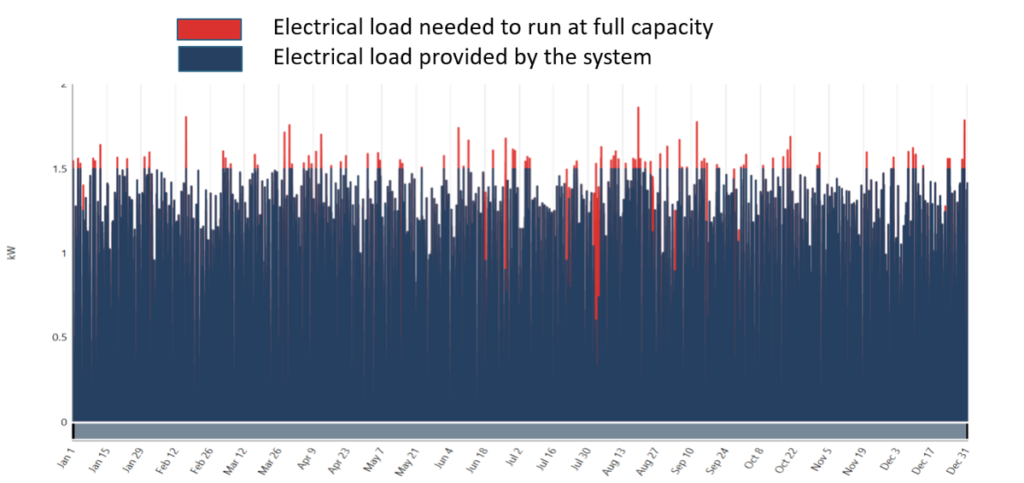
Cost
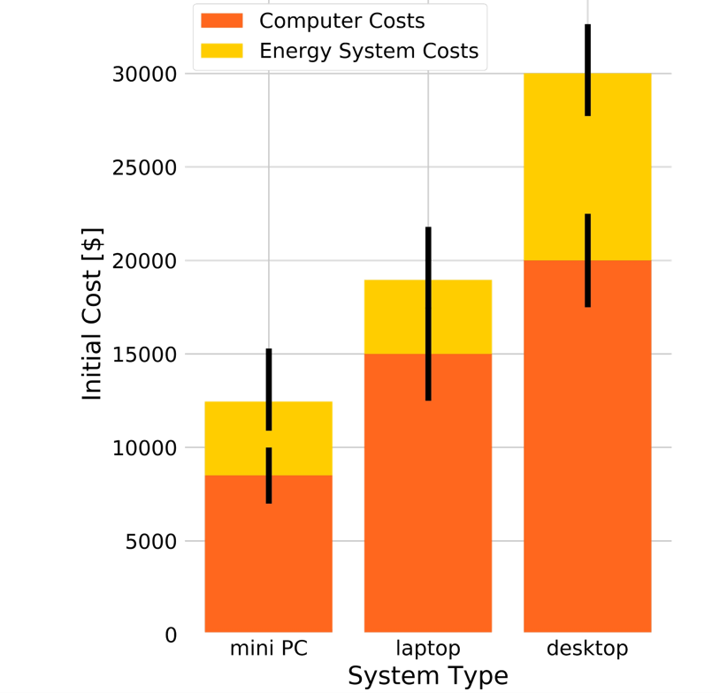
A cost-effective solution was critical given that our project sponsor is a non-profit and relies on donations to make projects like this possible. We found pricing for computer systems and solar components from online suppliers and iteratively optimized the cost over a 10-year project lifespan with the help of HOMER energy software. The plot to the right shows the results: mini-PCs offer the cheapest option for both the actual computer cost and the solar system size required. Please note that peripherals are not included in the plot.
HOMER energy allowed us to determine the most optimal balance of cost and reliability. This resulted in an overall cost of $22 900 for two solar energy systems in Harbu Chulule, each designed to power 25 computers. The cost of the solar system is 39% of the total cost; the remainder of the cost is the price of buying mini-PCs.
Repeatability
We developed a user-friendly design guide for reliable solar energy systems based on the energy demands of a similar classroom. Our comprehensive guide allows non-profits to design grid-independent solar energy systems for rural schools around the world. After following the flowchart on the right and calculations described in the guide, the user will be able to find compatible electrical components which suit their system.
The Design Guide includes:
- Steps to size solar panels and batteries using a free online solar energy resource
- How to size and ensure compatibility of charge controller, inverter, breakers, cables, etc. based on the National Electrical Code and Canadian Electrical Code
- Wiring Diagrams
- Electrical component storage unit designs
- Solar panel racking system designs
- Price estimates to set fundraising goals
Our Design Guide includes the sizing calculations for Harbu Chulule for users to follow as they size their own system. Some figures from the design guide are included in the Gallery below.
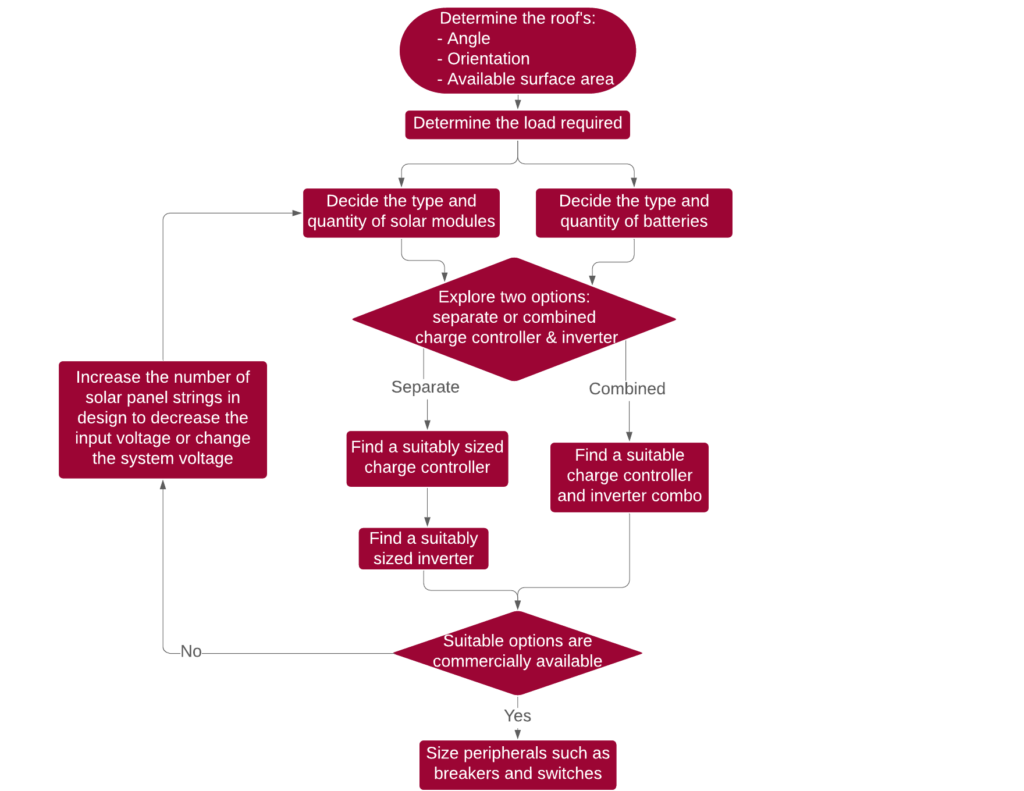
Net-Positive Impact
We ensured that we were achieving a net-positive impact with our design by focusing on community development rather than only providing a solution. Our holistic design criteria weighed the benefits and risks to the Harbu Chulule community.
Quality Education
Ensuring equitable and inclusive quality education is one of the UN’s sustainable development goals. Our project will ensure that students in rural schools have the infrastructure required to develop technological skills for modern society.

Land Use
Farmland scarcity is a large problem in Ethiopia. Our roof-mounted solar system minimizes land use. Since solar shading is less of a concern with roof installations, this also makes sense from an efficiency perspective.
Environmental Impact
Diesel generators are widely used in Ethiopia as a backup to the unreliable grid. Our solar energy system would produce 2600 fewer kilograms of greenhouse gasses per year than diesel generator alternatives. This translates to 100 times fewer emissions, making our design the environmentally friendly option.
Safety
With the system being installed at a school, safety was an important consideration. We are using sealed lead-acid batteries because they are safer than flooded lead-acid. We also recommended locking tamper-proof measures to prevent electrical accidents. Additionally, we avoided the more traditional diesel generators in our energy system design, as diesel delivery to Harbu Chulule is unsafe and unreliable.
Maintenance
Solar panels and sealed lead-acid batteries require no routine service, allowing us to make a maintenance-free design. Solar is not heavily used in rural Ethiopia. As so, there are few skilled professionals available for maintenance work.
Local Sourcing
Our design aimed to support the local economy. Whenever feasible, we chose components that could be sourced locally in Ethiopia. Therefore, we opted for Lead-acid Batteries instead of Lithium-Ion. The racking and storage systems were also designed using materials that are readily available in Ethiopia. This way they can be built locally by locals.
Next Steps
We have partnered with Project90, a campus club, to ensure the completion of this project. Project90 will travel to Ethiopia in 2022 to implement the design. We will also be sharing our design guide with other non-profits who wish to pursue similar projects. We are actively seeking more partners and sponsors for this project. If you are interested in being involved, please come visit us in our zoom room, or get in touch with HOPEthiopia or Project90.
Partners and mentors
We would like to thank:
- Our sponsor, Wayne King, P.Eng (HOPEthiopia)
- Our industry advisor, Gideon Mentie, E.I.T. (Magna Engineering)
- Our solar advisor, Brodie Yyelland
- Our academic advisor, Dr. Ed Nowicki
- The ENGG 501/502 teaching team, including Dr. Budiman (instructor), Penny Gong (TA) and Haobin Chen (TA).
Without the support of these people, our project would not have been possible.
Our photo gallery
